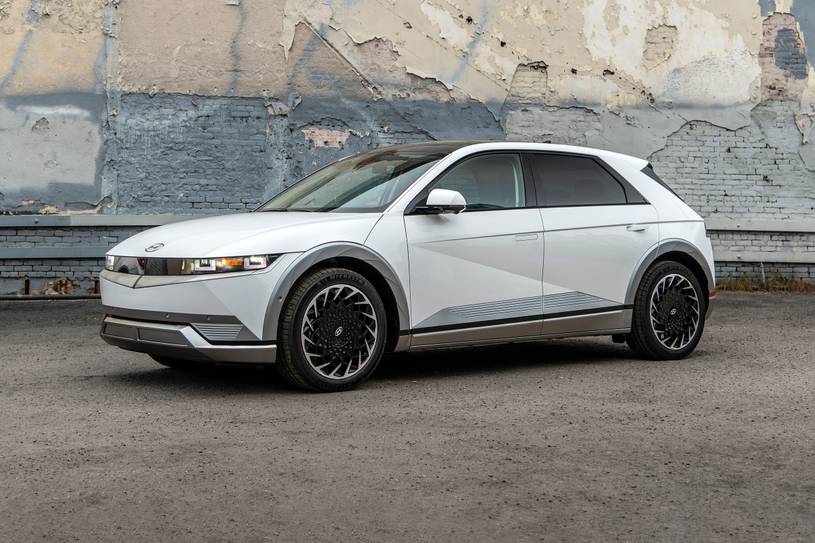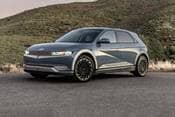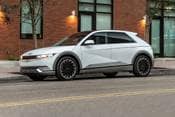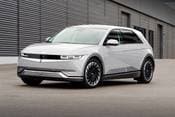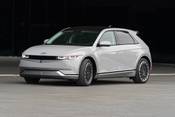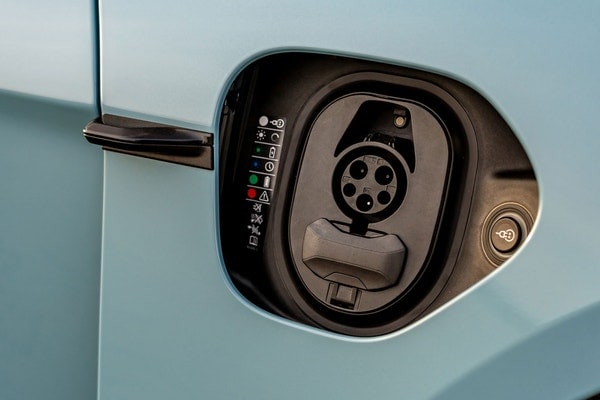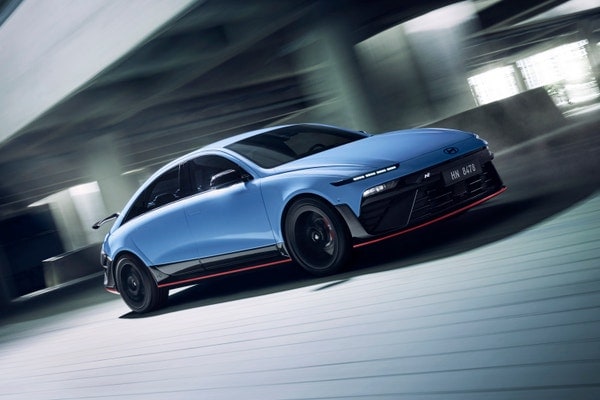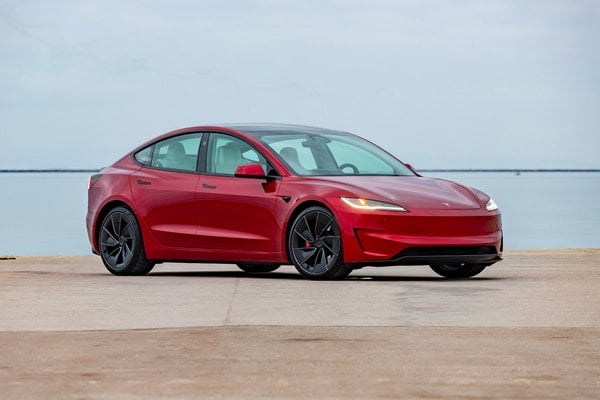For our first taste of the Ioniq 5, Hyundai sent us off in a Limited trim with AWD. Around town, the Ioniq 5 is like most of the EVs in its class: restrained and easy to get the hang of. The accelerator pedal has a lot of travel (i.e., there's a long way to go before your foot is in the carpet). But that means it's easy to control how much power you want from the two electric motors whether you're easing your way through city traffic or zooming away from a red light.
And zoom it will. We've done our initial testing on the Ioniq 5. Our test vehicle accelerated from 0 to 60 mph in 4.7 seconds, making the Ioniq 5 a tenth of a second quicker to 60 mph than the Long Range Tesla Model Y. That's more than enough punch to zip around the city and makes merging onto freeways easy.
For most of our city driving we set the brake regen to auto. Brake regeneration attempts to recoup some of the energy lost during braking and feed it back into the battery to extend the car's range. The auto setting in the Ioniq 5 uses the cameras and radar mounted behind the rearview mirror to monitor the distance between the Ioniq 5 and the car in front and adjust the regen accordingly. The further the car ahead, the less regen you get and vice versa.
Auto regen is a system that does its best to maintain small gaps in traffic, but it's not like adaptive cruise control — your right foot is still in charge of the acceleration. The changes between heavy regen and soft regen are done subtly and smoothly.
There are other modes for the car's regenerative braking, too. Levels One through Three up the amount of regen you get and slow the car down quicker and more abruptly each level up. And there is i-Pedal, Hyundai's name for the Ioniq 5's one-pedal driving mode that will bring the car to a complete stop if your foot isn't on the accelerator. It also brings with it the most aggressive regen profile. It's good for schlepping around town, but we found we still preferred the auto setting and its smoother transitions.
The Ioniq 5 is surprisingly capable on curvy roads, too. We stuck it in Sport mode to see what would happen when the going got twisty. Much to our surprise, the Ioniq 5 handled the roads with aplomb.
Sport mode sharpens up the responsiveness of the accelerator pedal and makes power from the motors nearly instantaneous. The braking system combines regenerative braking and traditional friction braking so well you simply cannot notice it. Even the steering does a good job of communicating grip levels to the driver and where the front wheels are pointed. Body roll is kept to a minimum no matter how hard you fling the Ioniq 5 around a turn. In essence, the Ioniq 5 isn't just a comfy city cruiser, and it has more than enough talent to hustle down a back road.
